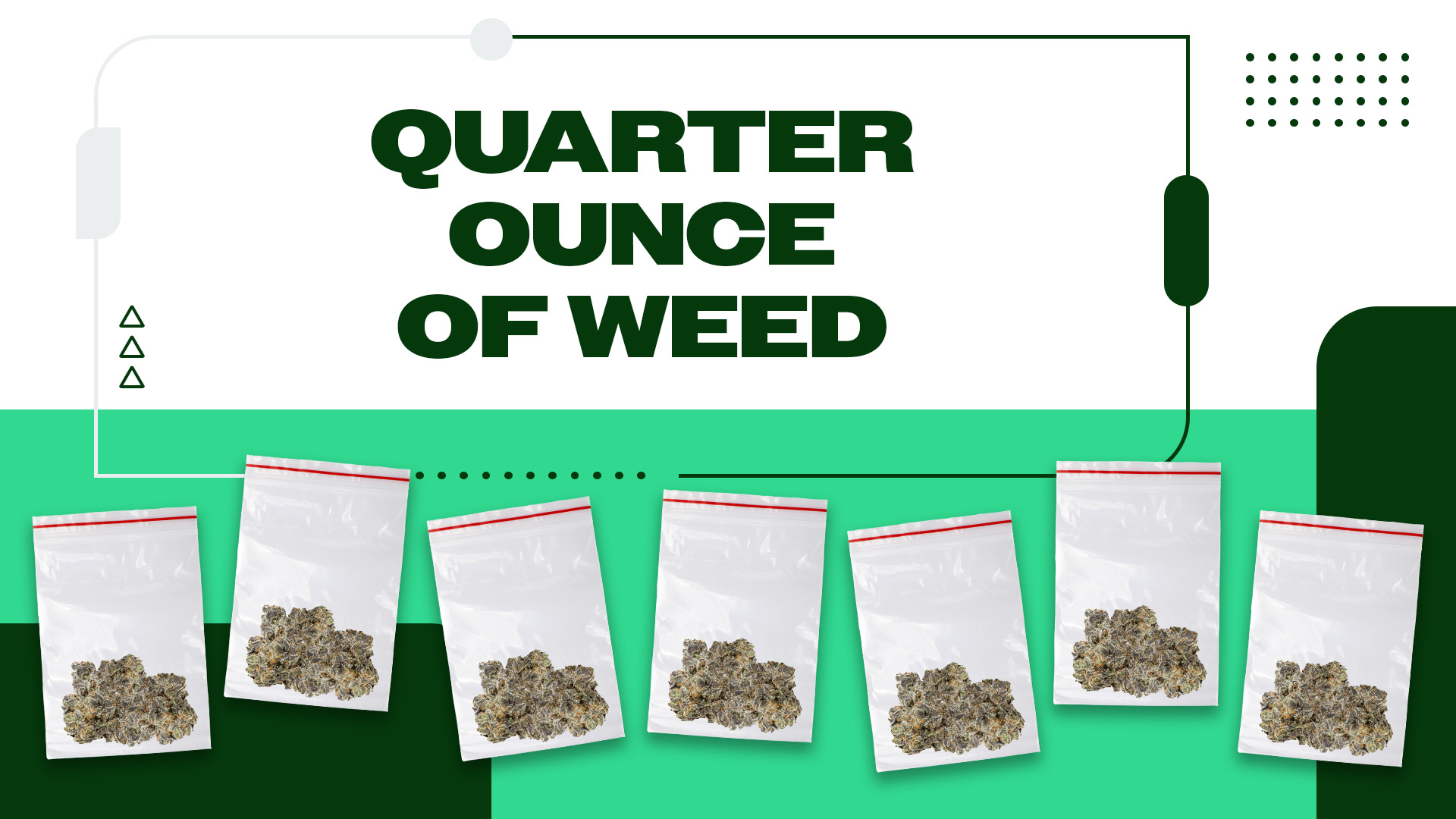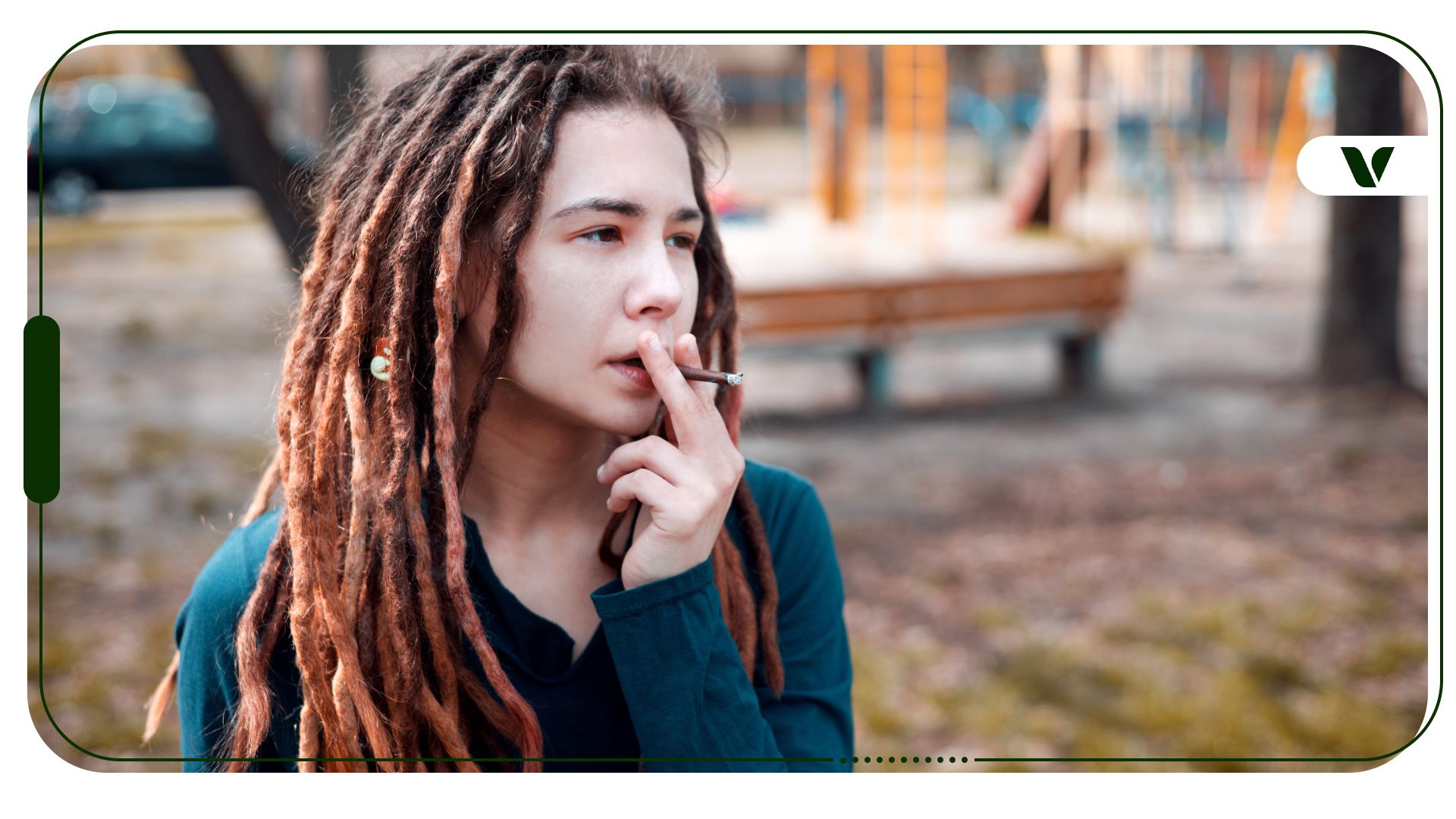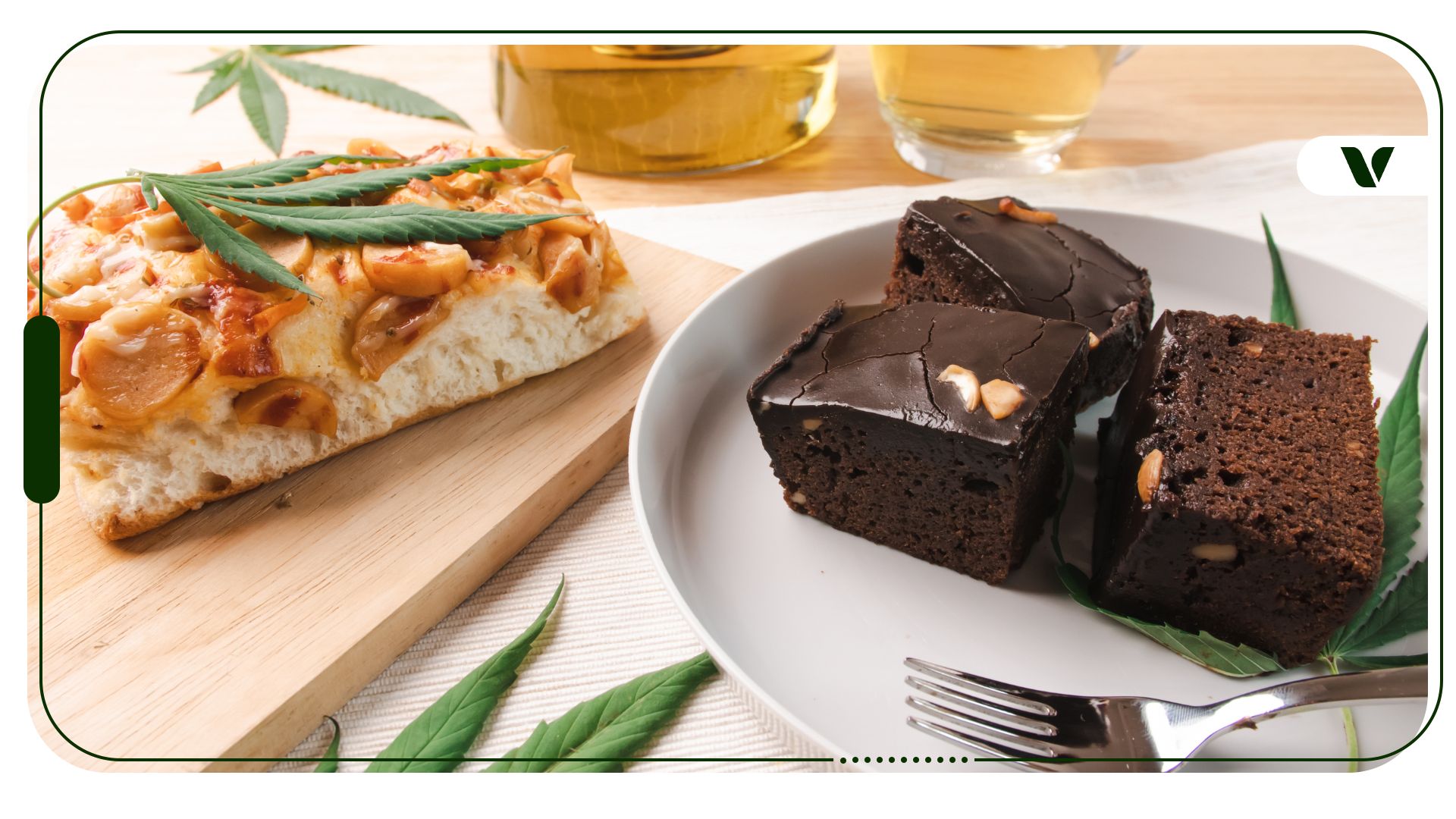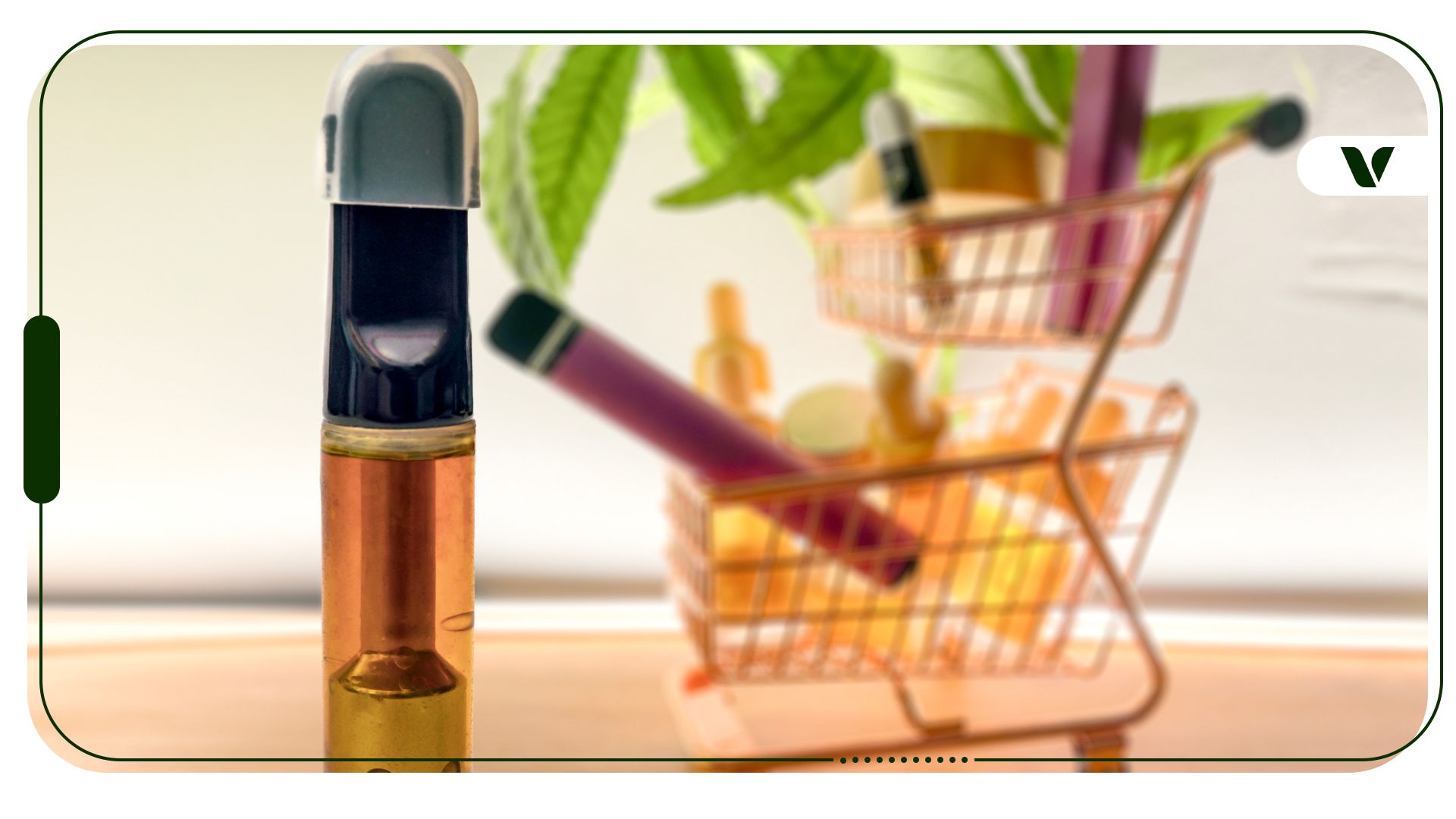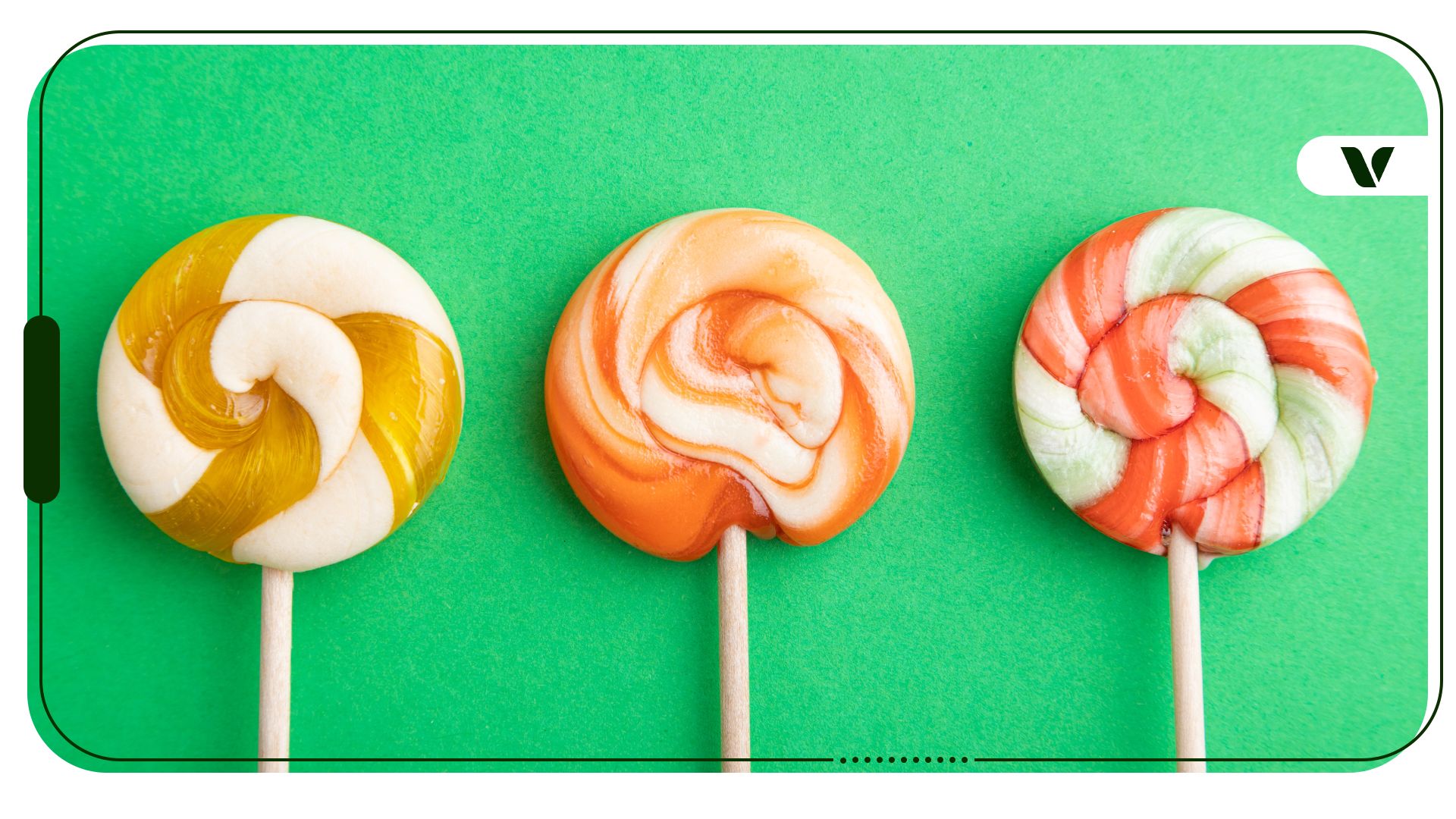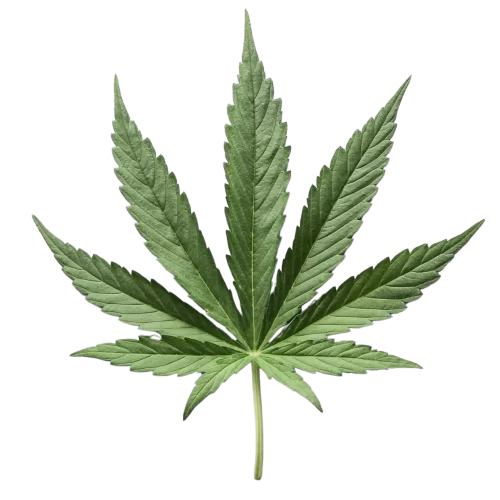Since California first legalized medical cannabis in 1996, the market has expanded across 38 US states, 24 of which permit recreational cannabis use and commerce. Attitudes about cannabis consumption are evolving and have even shifted so that the number of self-reported daily cannabis users in America surpassed the number of daily alcohol users in 2022. With an overwhelming majority of Americans in support of cannabis legalization in the United States, the legalization effort has culminated in the revolutionary movement to reclassify the drug, which will further progress research into the potential benefits and uses for cannabis-derived products.
To an inexperienced ear, the exchange of various terms like “an eighth,” “one g,” or “a quad” in reference to different quantities of cannabis flower products might sound like a completely alien system of quantification. But these measurements actually correspond to meaningful amounts that are important to understand when you’re at the dispensary. In the smallest quantities, cannabis flower is typically sold by the gram, but larger quantities of weed may be counted by the ounce. Most retailers sell flower according to the following standard weights:
- 1 gram, sometimes referred to as a “g.”
- 3.5 grams, which equals 1/8 of an ounce and is also known as an “eighth.”
- 7 grams, or ¼ of an ounce, referred to as a “quarter.”
- 14 grams, which is half an ounce.
- 28 grams, or 1 ounce.
A quarter ounce, also known as a “q” or a “quad,” is a versatile quantity of flower that can be used to make a batch of edibles or a DIY pre-roll pack. This medium-sized amount of flower allows you to get a lot of use out of your purchase without having too many leftovers to store. The following sections will answer some basic questions you may have about buying a quarter of weed and how to use it.
How Much Is a Quarter Ounce of Weed?
For starters, a quarter ounce is made up of 7 grams of weight. As a reference, three US pennies weigh 7.5 grams total, which is slightly heavier, but a good approximation to give a more tangible example of how much a quarter ounce weighs. Visually, the size of a quarter ounce of cannabis flower can vary depending on the density of the buds and the coarseness of the final product (whole flowers, versus popcorn buds, versus shake). Although it is always ideal to measure your cannabis flowers using a scale, generally a collection of buds about the size of a medium apple should make up about one-quarter ounce of flower.
However, factors like moisture and “stickiness” play a role in increasing the density of cannabis buds, which can make two quantities of weed that look the same by visual inspection produce differing masses despite appearing to be equal amounts. This is why it is ideal and virtually essential to use a scale when doing your measuring at home.
Cannabis flowers are dried and then cured before being used for smoking applications, with the ideal moisture content of smokable cannabis flower being around 10%. Unfortunately, since buds that contain more moisture will weigh more than drier ones, some purveyors, particularly on the illicit market, attempt to increase profits by selling incompletely dried flowers that hold more water weight. Such sellers will often market this weed as “sticky” to explain away the smaller appearance of the weighed product.
Trichrome density also influences how dense the buds are, which will affect the appearance of your quarter ounce. Cannabis flowers with high trichrome densities are also called “sticky,” which refers to the resin produced by these hair-like structures found on the surface of a cannabis plant’s flowers, leaves, and stalks. Unlike higher moisture content, the higher trichrome content found in sticky weed is desirable, as the majority of cannabinoids, like psychoactive tetrahydrocannabinol (THC), are found in these plant structures. You will notice quality flower is often “stickier” because a dense concentration of cannabinoid-rich trichomes contributes to stronger effects and a more flavorful smoking experience. Because sticky weed is more packed with resinous fibers and will typically be on the more moist end of the optimal dryness spectrum, you may notice that a quarter ounce of high-grade flower may appear smaller than a quarter ounce of drier, lower-priced products.
Other, more pernicious factors can unfortunately affect the weight of a cannabis flower product. Particularly in products obtained from the illicit market, substances other than just cannabis flower may be present in the buds that bulk up the weight of a batch of weed. Unscrupulous dealers in unregulated markets may corrupt a batch of cannabis buds with additives like glass or laundry detergent to make smaller quantities of weed heavier. These unwanted materials not only prevent buyers from getting the full amount of cannabis that they paid for—they are also unsafe and essentially render an entire batch of products unusable.
To avoid ending up with a quarter ounce of flower bulked up and laced with undesirable or unsafe substances, it is best to purchase cannabis from certified, licensed vendors. If you wish to be extra informed about the purity, safety, and quality standards of a particular batch of product, check the label to look for a certificate of analysis (COA) showing that the batch was tested by a professional third-party laboratory for various contaminants.
How Much Does a Quarter Ounce of Weed Cost in 2024?
Because the price of legal cannabis flower is subject to a variety of factors such as local regulations, taxes, product availability or scarcity, and consumer demand, the cost of weed can vary widely from state to state. Based on national averages, you can expect to pay $30 to $125 for a quarter ounce of cannabis flower, without added taxes. This range varies based on the product’s quality, how established a state’s cannabis industry is, and the local market value of cannabis in a particular state.
As of 2023, the most expensive weed prices in the US are reported in New York, where cannabis prices are estimated at $23.17 per gram ($162.19 for a quarter) on average. For comparison, the national average price of flower in states with legal markets is $13.90 per gram, which is $97.30 for a quarter. The lowest prices are boasted by Oregon, where the average price for a gram of weed is $6.91, making a quarter valued around $48.37.
Why You Should Get Your Medical Marijuana Card
Veriheal has satisfied millions of patients nationwide by giving them access to these benefits
- Larger purchase limits
- Peace of mind
- Enhanced legal protection
- Access to higher potency strains
- Save up to 25% on cannabis purchases
- Skip the line at the dispensary
Although it is unclear exactly what factors contribute to greater prices in certain regions, it is suspected that variables like availability of products, local restrictions on retail locations, and how established the market is in the region. For example, prices for flower are lower in states where supply tends to be higher, so states with more established legal markets generally offer lower prices for cannabis products, as legalization has been able to facilitate a higher supply of cannabis in these states over time.
Moreover, different states and even individual municipalities impose different taxes that add to the price of cannabis, and this must also be kept in mind when determining how much a quarter of weed is worth in your area, particularly for recreational users. About 20 US states tax recreational cannabis purchases, and these added costs can be charged based on a percentage of price, product weight, or product potency, depending on the state. Medical cannabis users, however, can often avoid paying these extra costs, either partially or entirely, which makes having a medical card helpful even if you live in a state that allows recreational cannabis use.
Is it Legal to Buy a Quarter Ounce of Weed in 2024?
Limitations surrounding how much cannabis flower a person can purchase in one sale varies considerably across the country, with legal cutoffs ranging from 1.0-2.5 ounces. This inconsistency exists because every state with legal cannabis has its own system of laws and regulations. Since cannabis is still an illegal substance according to the federal government, there are no nationwide legal standards for how much flower you are allowed to purchase. Thus, although the 10th Amendment of the US Constitution allows individual states a level of autonomy to resist certain federal laws—such as cannabis prohibition laws—without interference from federal authorities, cannabis is still considered highly dangerous and forbidden under US law. Fortunately, this is likely to change soon as cannabis is rescheduled to Schedule III.
So far, at least 38 US states allow for medical or recreational cannabis commerce and consumption within their jurisdictions. In these states, adults meeting the minimum age threshold, which is typically 21 for recreational users or 18 for medical users, can legally purchase, possess, and use federally illicit cannabis products.
Medical patients can buy more cannabis at once than recreational users in every legal state. In most states with legalized recreational cannabis, recreational users are able to buy at least 1 ounce, or 4 quarters (28g), of cannabis at one time. Medical users, on the other hand, are generally permitted to purchase more, with states like California and Massachusetts allowing medical users to purchase up to between 8-10 ounces at once. Not only can medical cannabis users purchase more products, they also generally pay less for their flower than recreational users in most US legal cannabis markets due to the lower taxes attached to medical versus recreational cannabis. So, even if your state has legalized recreational cannabis consumption, there are still ways you could benefit from obtaining a medical card, depending on where you live and how often you smoke.
How Much THC Does a Quarter of Weed Contain?
There is no standard amount of THC found in a quarter of weed. This is because THC content is a feature that varies depending on the strain or breed of cannabis plant used for your flower product. Cannabis plants can be selectively bred to emphasize certain features, such as bud size or cannabinoid content, so the amount of THC in a particular quarter of weed will vary depending on what strain you choose. Broadly speaking, according to a survey testing the THC content of thousands of recreational and medicinal cannabis flower and pre-roll products in states around the US, the majority of cannabis products on the market contain between 15%-30% THC.
It is also critical to keep in mind that THC content doesn’t tell the full story of the effectiveness of a particular strain. Other cannabinoids, like cannabinol (CBN) or cannabidiol (CBD), as well as aromatic compounds called terpenes, such as pinene and linalool, are reported to have their own distinctive effects. An entire complex of compounds is contained in your cannabis product, and THC content, while important, does not provide the full story of a bud’s desirability or quality.
How Many Joints Can You Roll From a Quarter Ounce of Weed?
With 7 grams of cannabis flower at your disposal, your options are relatively open regarding how many joints you can get out of your weed. Depending on how much you like to smoke in one go and how skilled you are at rolling joints, a quarter ounce of cannabis can produce between around 7-20 joints. If you prefer quick smoke breaks, you could roll a few mini joints using between 0.3-0.5 grams each. Or, if you want to pass around a more substantial smoke with some companions, and you’re feeling confident in your rolling abilities, a quarter of weed can easily make some larger 1-gram treats.
If you haven’t tried rolling a joint before, we recommend starting with about a half gram of ground cannabis flower, as it is a manageable amount to work with when trying to roll your buds into a tight bundle.
How Many Brownies Can You Make From a Quarter Ounce of Weed?
If you want to make your own cannabis-infused brownies using cannabis flower, a quarter of weed is an ideal amount to try your hand at a batch. Be aware that the process of creating cannabis brownies is more involved than merely throwing your flowers into the brownie mix (please do not do this). Instead, you will need a recipe for cannabis-infused oil or butter to use in place of the regular oil you would normally add to a non-infused brownie recipe. A quarter of weed can infuse about a cup of oil, but the final potency of your brownies will depend on the THC levels of your cannabis flower.
It is important to remember that taking cannabis edibles produces different effects from smoking. These effects may be more intense and longer lasting. Particularly with homemade edibles, where achieving a controlled and consistent dosing level throughout the product is more difficult, it is good to be cautious. If you want to take a more precise and customized approach to your cannabis edibles, it may be helpful to refer to a dosage calculator that can account for the THC concentration of your particular flower and the amount of oil you wish to infuse, so you can have more control and clarity concerning dosing individual brownies.
Author, Share & Comments


